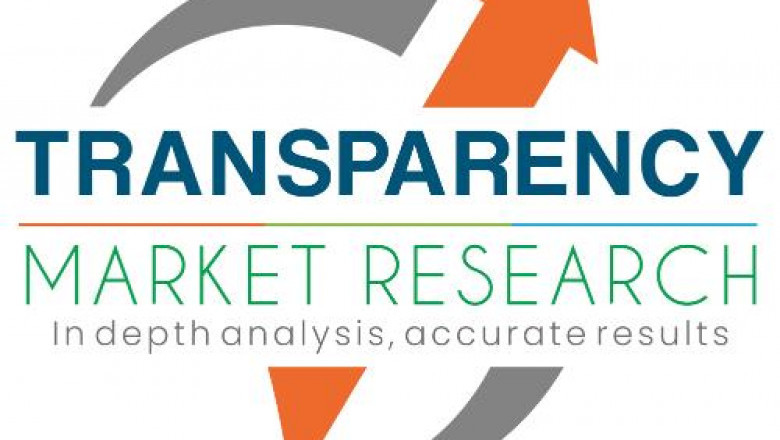views
The global transition toward cleaner energy is reshaping industries, and hydrogen is at the heart of this transformation. Among the various technologies that support the hydrogen economy, Type 4 hydrogen cylinders have emerged as a critical solution for efficient, lightweight, and high-pressure hydrogen storage. With the market valued at US$ 992.0 million in 2023, the global Type 4 Hydrogen Cylinder Market is projected to advance at a robust CAGR of 13.2% from 2024 to 2034, reaching an estimated US$ 4.4 billion by 2034.
Understanding Type 4 Hydrogen Cylinders
Hydrogen, the lightest and most energy-dense gas by weight, is notoriously difficult to store due to its small molecular size and high diffusivity. To store it safely and effectively, especially under high pressure, advanced storage containers are required. This is where Type 4 cylinders come in.
Unlike Type I (metallic) and Type II/III (metallic-composite hybrid) cylinders, Type 4 hydrogen cylinders use a polymeric liner (typically HDPE or polyamide) that is fully wrapped with a fiber resin composite, making them lightweight and corrosion-resistant. These features make them ideal for applications in transportation, energy storage, and refueling infrastructure.
Drivers of Market Growth
1. Demand for High-grade Hydrogen Storage
Hydrogen storage systems must withstand extreme conditions—high pressures, low temperatures, and frequent refueling cycles. Type 4 cylinders meet these rigorous requirements, offering exceptional durability, safety, and weight reduction. Their lightweight nature not only improves fuel economy but also allows for longer-distance hydrogen transport and higher payloads in commercial applications.
As hydrogen-powered vehicles—especially commercial and long-haul transport—gain traction, the need for high-pressure, high-performance storage systems is growing rapidly, boosting the demand for Type 4 cylinders.
2. Surge in Renewable Hydrogen Projects
Government investment in hydrogen infrastructure is propelling market momentum. In May 2024, the European Commission awarded €720 million to seven renewable hydrogen projects. Similarly, the U.S. Department of Energy (DOE) is investing US$ 7 billion in regional hydrogen hubs across the country. These large-scale projects require high-performance storage and distribution solutions, creating fertile ground for the growth of the Type 4 hydrogen cylinder market.
Regional Insights: Asia Pacific Leads the Way
The Asia Pacific region accounted for the largest market share in 2023, driven by its aggressive pursuit of net-zero emission targets. Countries like Japan, China, South Korea, Australia, and India are implementing national hydrogen strategies and investing heavily in clean hydrogen production.
For example, Indonesia launched a green hydrogen production facility in March 2024, leveraging geothermal power to generate hydrogen from condensation water. Such initiatives showcase the region's commitment to green energy and further strengthen the outlook for Type 4 cylinder adoption.
Emerging Trends in Type 4 Hydrogen Cylinder Manufacturing
The market is witnessing a transition toward mass production, particularly in Europe. Mass production not only reduces manufacturing costs but also increases supply chain efficiency, which is vital for scaling hydrogen infrastructure.
Moreover, technological innovations—such as improved fiber wrapping techniques and optimized polymer liner materials—are enhancing storage capacity, safety, and cost-effectiveness. These innovations are likely to accelerate market adoption across multiple sectors.
Applications Across Diverse End-use Sectors
Type 4 hydrogen cylinders find applications in:
- Hydrogen storage infrastructure
- Hydrogen refueling stations
- Fuel cell electric vehicles (FCEVs), including:
- Light-duty vehicles
- Commercial vehicles
- Heavy-duty vehicles
- Energy and power sectors
As governments and private sectors explore hydrogen as a viable replacement for fossil fuels, Type 4 cylinders are becoming a core enabler of this transformation.
Competitive Landscape and Key Developments
The Type 4 hydrogen cylinder market is highly competitive and innovation-driven. Key players include:
- Hexagon Purus
- Luxfer Holdings PLC
- Worthington Industries
- ILJIN Hysolus Co., Ltd.
- Toyoda Gosei Co., Ltd.
- Faurecia
- Hanwha Cimarron
- OPmobility SE
These companies are investing in R&D, strategic partnerships, and manufacturing capacity expansion. For instance, FORVIA launched a mass production plant in France in 2023 to deliver 100,000 hydrogen tanks annually, while Confidence Petroleum India Limited announced its entry into green hydrogen cylinder production via its subsidiary Silversky Exim Pvt. Ltd. in February 2024.
Conclusion: A Promising Outlook
As the world intensifies its efforts to curb carbon emissions and transition to sustainable energy sources, hydrogen is expected to play a pivotal role in global decarbonization. Type 4 hydrogen cylinders, with their unique combination of lightweight structure, high durability, and safety, are essential components in enabling this energy shift.
With a 13.2% CAGR forecasted over the next decade, the market is poised for rapid growth, driven by technological innovation, renewable hydrogen investments, and global policy support. Stakeholders across the hydrogen value chain—from manufacturers to policymakers—must align their efforts to harness the full potential of this game-changing technology.





















Comments
0 comment